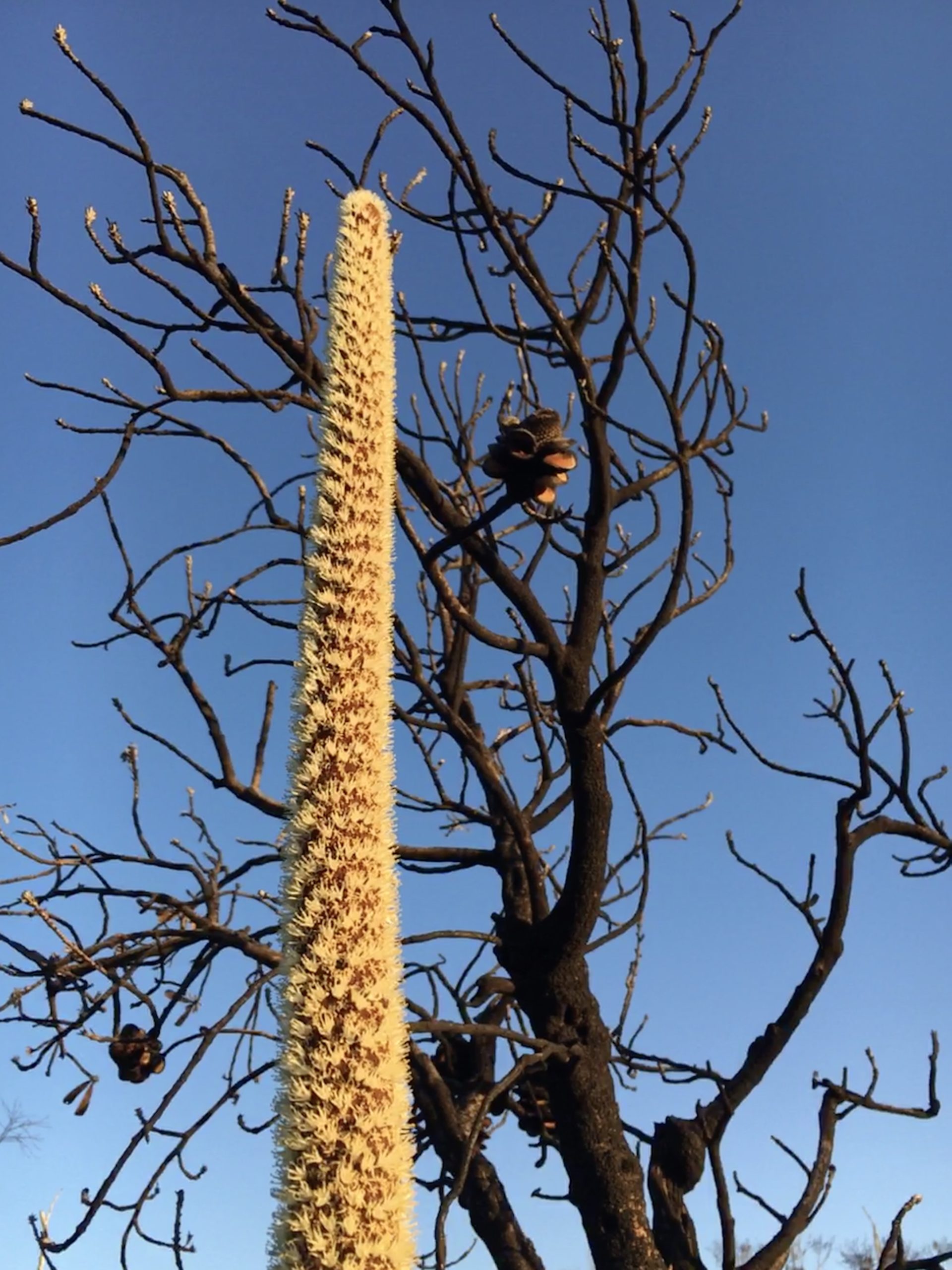
At dawn on Anzac Day 2020, I lit a candle and took it to my front gate, with a transistor radio tuned to the ABC broadcast of the service from the Canberra War Memorial. My neighbours slipped out too and we stood on the roadside, four women keeping vigil. Our candles barely flickered in the stillness. As the bugle of the Last Post travelled through the radio we came to understand that other notes were floating from the darkened houses up and down our valley. Buglers and trumpeters and trombonists, all playing in isolation, making an orchestra that held us all. As the music faded for the Minute’s Silence the birds filled in the space, our own magpies adding their wardles to the raven caws from Canberra. Time and sound and life looped in a moment of copper light and brass notes and birdsong, of candle flame and radio waves, of communion and remembrance for what has been endured.
At the year’s beginning the air had been thick with the smoke of burning forests and animals. We lived with the scream of sirens and the thrum of helicopter blades and fingers of flame along our ridges and clifftops. The valleys were charged with fire until February, when strafing rain brought floods. We coiled all this fear into our chests and forgot how to breathe.
And then the pandemic.
Concussion happens when the frail vessel of a body hurtles towards something and is suddenly stopped. The collision and agitation alters our brains – the first psychologists of the Great War attributed shell shock to concussion, thinking it was caused by sound, percussion, instead of by trauma. The virus stopped us. The shutdowns separated us from each other and our critical moments of connection: our Blue Mountains Music Festival, the Anzac Day marches, Winter Magic, every musician’s gig, the dancing, the choirs, the libraries, our jobs, our families. Everything that made us human; our embraces, our very breath, was a danger. In the shock we became inarticulate and distracted. Time lengthened, and slipped.
In those days I walked in Darug and Gundungurra country. Fire and rain had stripped the plateaus back to elemental forms, to rock and carbon. I could see the bones of the country, the layers of sandstone and lava. Horizons once wooded looked like rows of burned match heads. The trees that survived had dropped their bark in tiles and their ivory trunks were etched with smoke stains. There was no birdsong, or insects.
We are emerging from isolation. The fire grounds are changing. Grasses begin to run across the scorched soil, little threads of hope. New leaves spin from the carbonised trunks of gum trees in stained glass colours; ruby and emerald, brass and copper. The landscape fills with young xanthorrhoea, their bases like a brocade, exploding pale green.
From each one rises a single spear, sheathed in a bridal lace of tiny cross-stitched flowers and spangled with sweet nectar. They are beacons, pennants borne by the vanguard of regeneration.
No battle leaves things unchanged. The fragile new bush is volatile. The smoke from the fires still circles the planet in the stratosphere and the pandemic continues to rage.
We cannot rest yet, and we cannot forget.